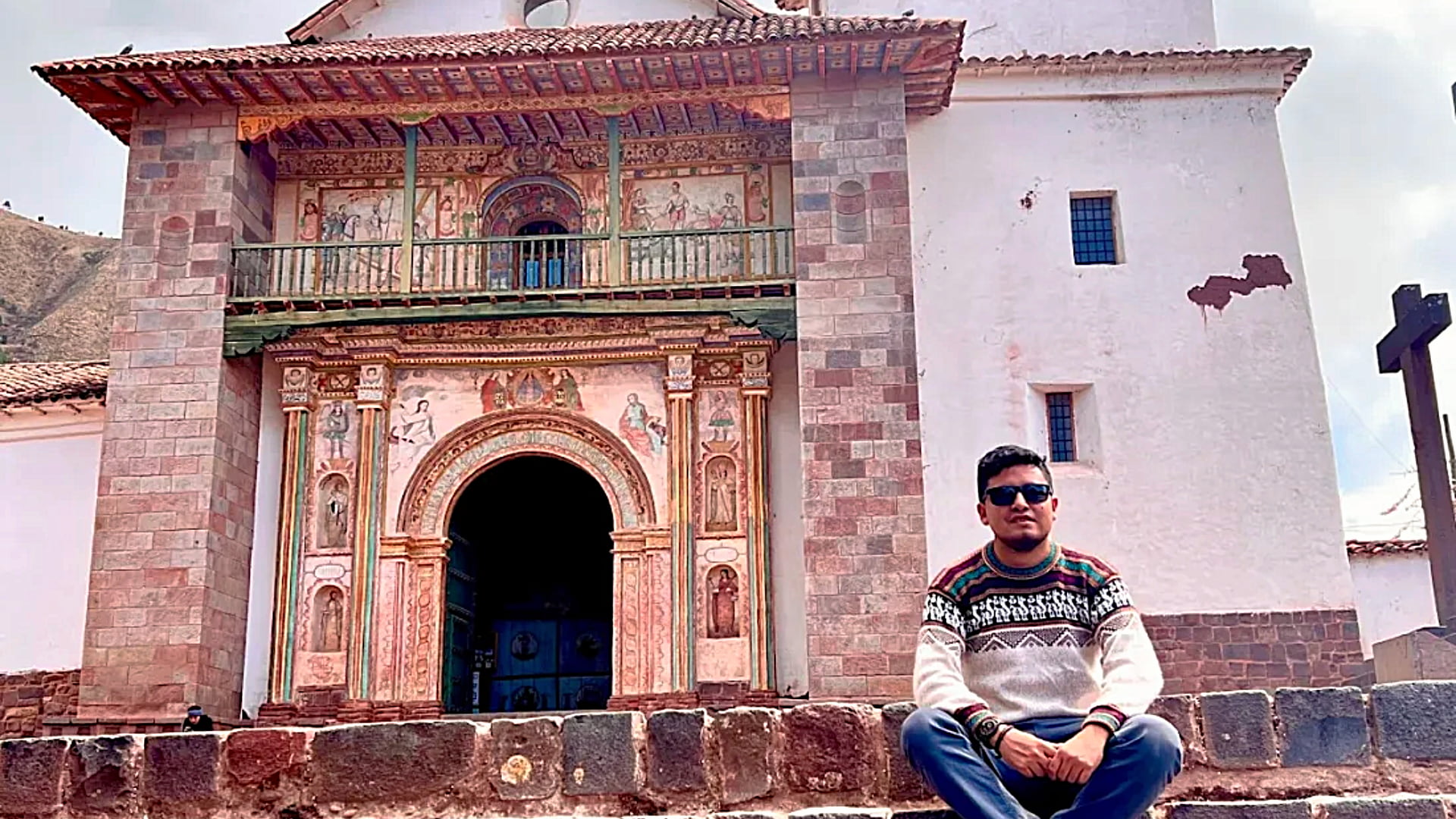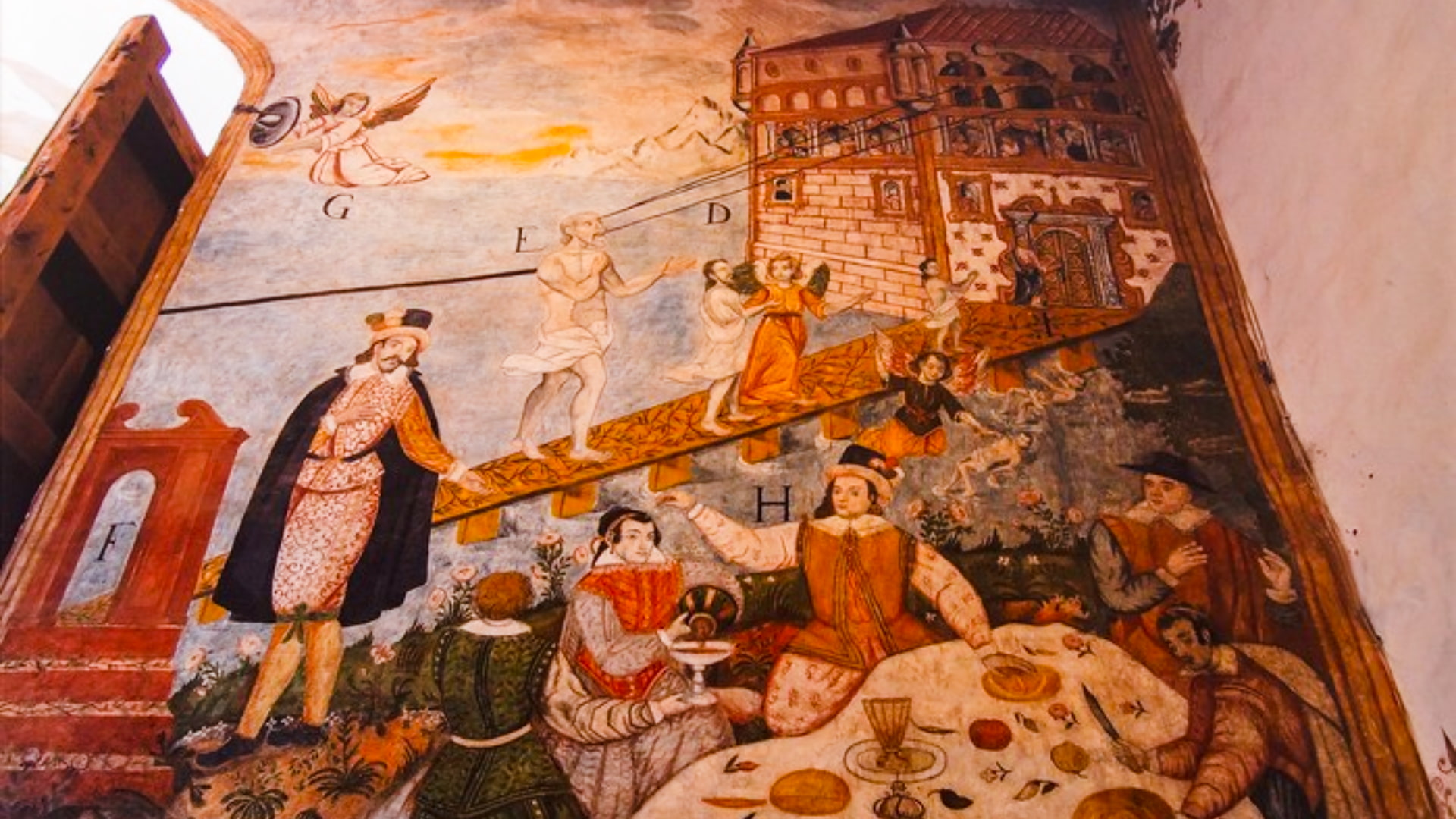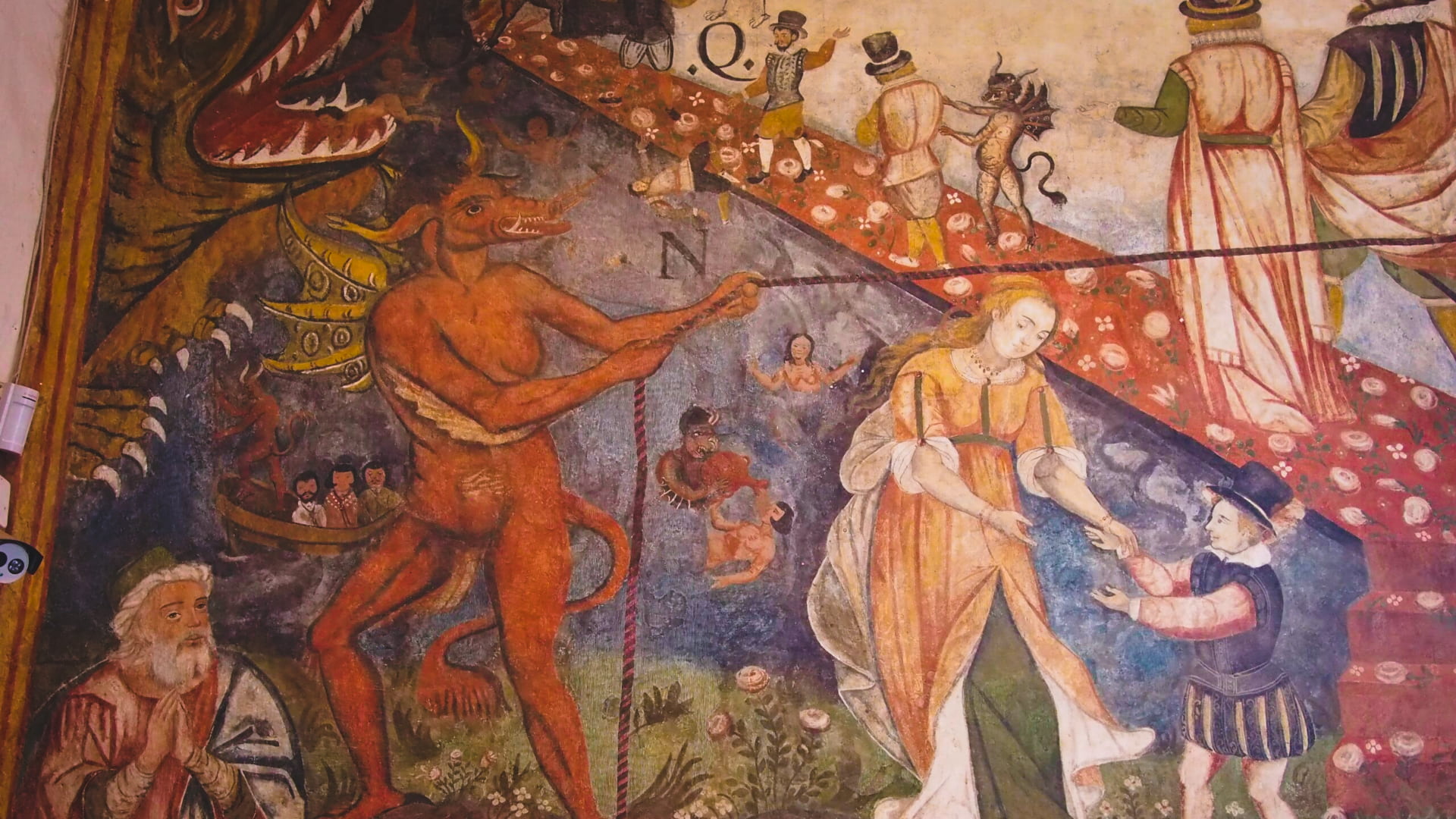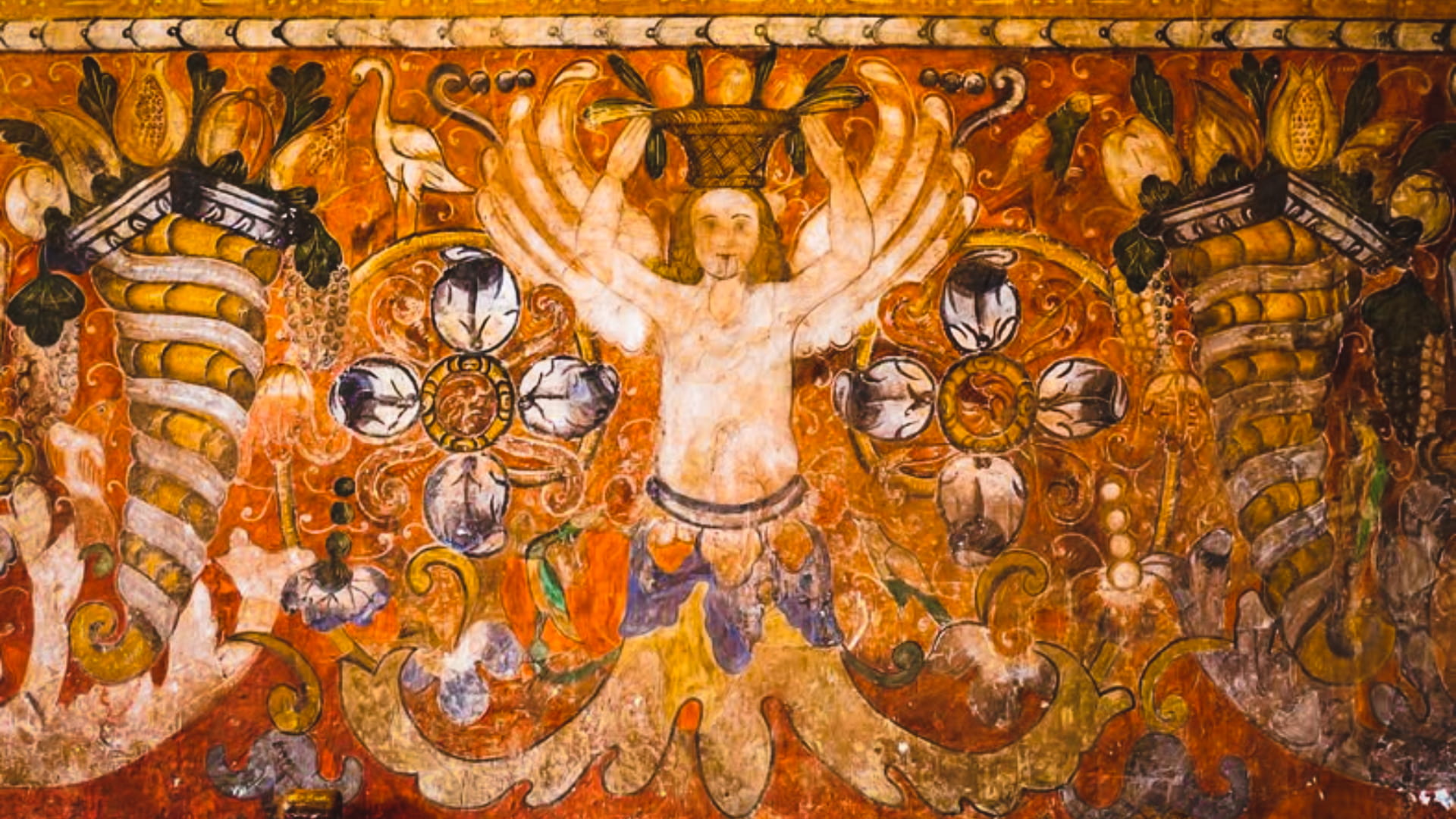In the heart of the Andes, Andahuaylillas church art offers a window into Peru’s spiritual and cultural fusion. Known as the Sistine Chapel of the Andes, this 17th-century church dazzles with golden altars, intricate woodwork, and murals that teach lessons of faith while preserving Andean identity. Travelers seeking the South Valley Cusco experience often include this gem in their itinerary, as it combines art, history, and spirituality.
The Baroque Splendor of Andahuaylillas Church Art
Although the exterior of San Pedro de Andahuaylillas is modest, its interior reveals a stunning Baroque canvas. Walls and ceilings are covered with frescoes, altarpieces shine with gold leaf, and every detail reflects devotion and artistry. This visual richness was not only meant to inspire awe, but also to educate communities through powerful imagery. Such Baroque art in Cusco highlights the blend of European techniques with local narratives.

The Path to Heaven Mural
Among the most iconic examples of Andahuaylillas church art is the Path to Heaven mural. It portrays a narrow, thorny road leading to salvation. Travelers on this road must abandon worldly pleasures to reach a radiant building that symbolizes eternal life. The mural vividly communicates that virtue requires effort and sacrifice. Pilgrims and visitors alike consider it one of the masterpieces of Cusco religious art.

The Path to Hell Mural
Opposite the mural of Heaven stands its counterpart: the Path to Hell. Here, a wide, flower-filled path leads to flames and destruction. Demons tempt and drag souls, while death hovers nearby, reminding visitors that temptation is always close. This mural serves as both a warning and a teaching tool, visually dramatizing the consequences of moral choices, enriching the understanding of Peruvian sacred art.

Symbolism in Andahuaylillas Church Art
The murals combine Catholic doctrine with Andean elements. Local animals, plants, and cultural motifs are woven into biblical scenes, creating a dialogue between worlds. Attributed to the painter Luis de Riaño and other Cusco School artists, these works exemplify how colonial art fused European Baroque with Indigenous creativity, turning the church into a gallery of mestizo identity. This unique style aligns with what many travelers seek when exploring Andean art and traditions.

Experiencing the Murals Today
Walking through the doors of San Pedro, visitors encounter these murals face to face. Placed directly at the entrance, they are impossible to ignore. The placement symbolizes choice: to enter the sacred space, one must reflect on the road of life, torn between sacrifice and indulgence. It is one of the most thought-provoking encounters in South Valley Cusco attractions.

Discover Andahuaylillas in the South Valley
A visit to the Sistine Chapel of the Andes is not just about faith; it is an immersion into history, symbolism, and identity. Combined with nearby sites such as Tipón’s Inca terraces and Pikillacta’s pre-Inca ruins, Andahuaylillas church art makes the South Valley one of Cusco’s most enriching routes.
Plan your South Valley journey and let the art of Andahuaylillas inspire you. Here, every mural is more than decoration: it is a story of resilience, faith, and cultural fusion waiting to be discovered.
